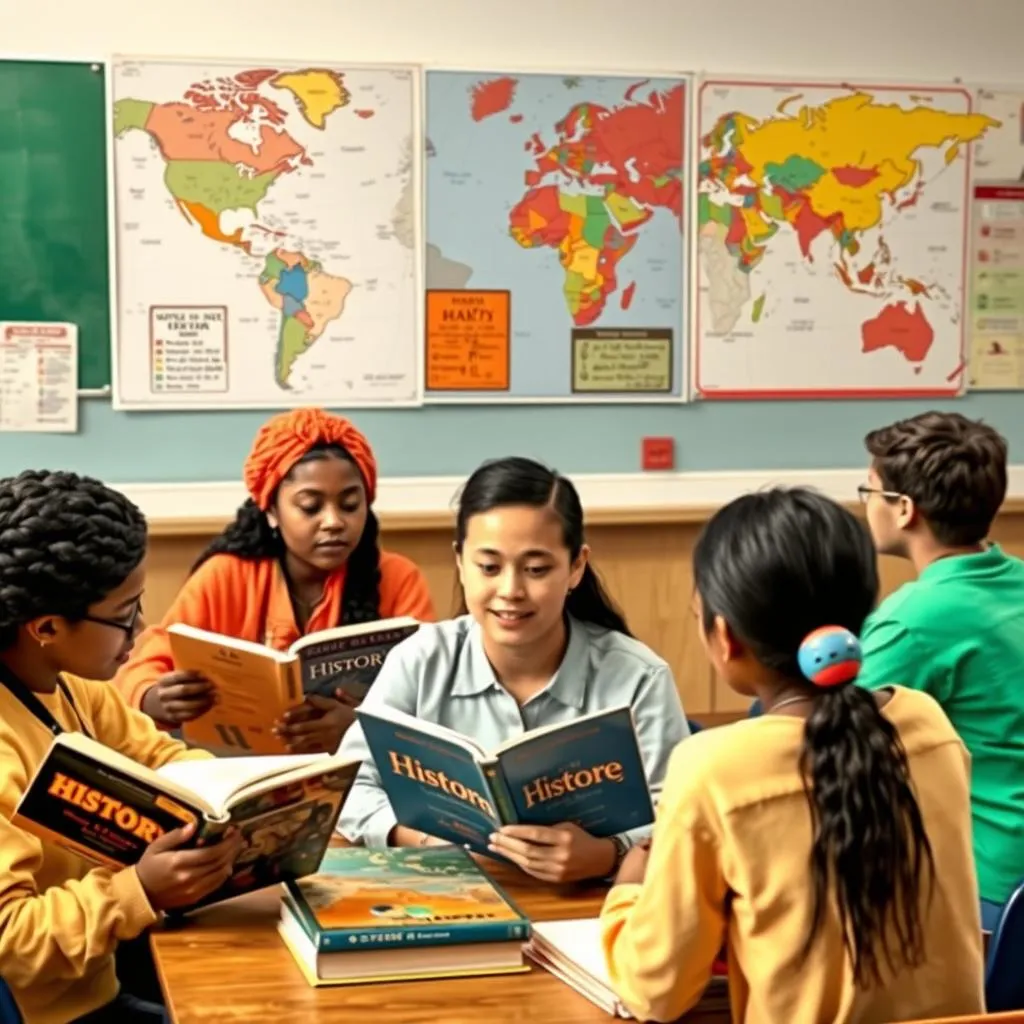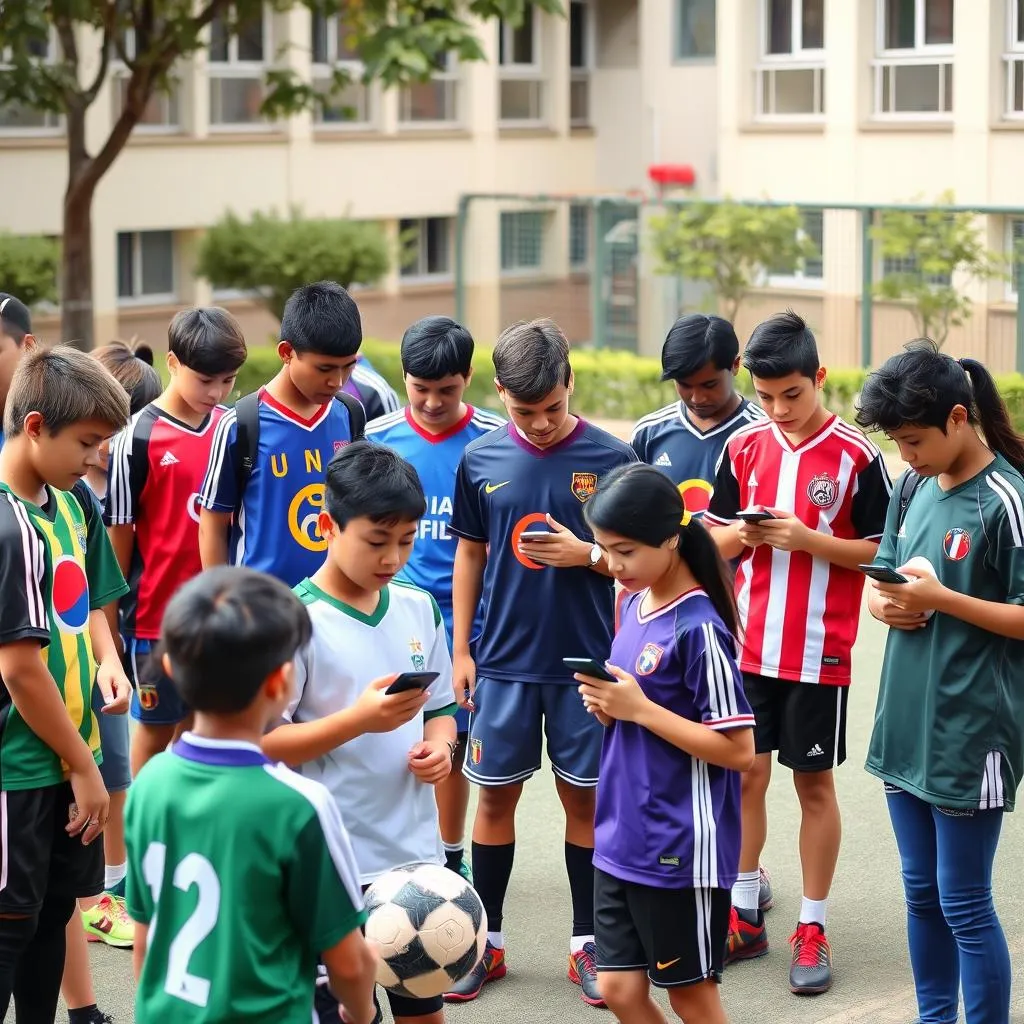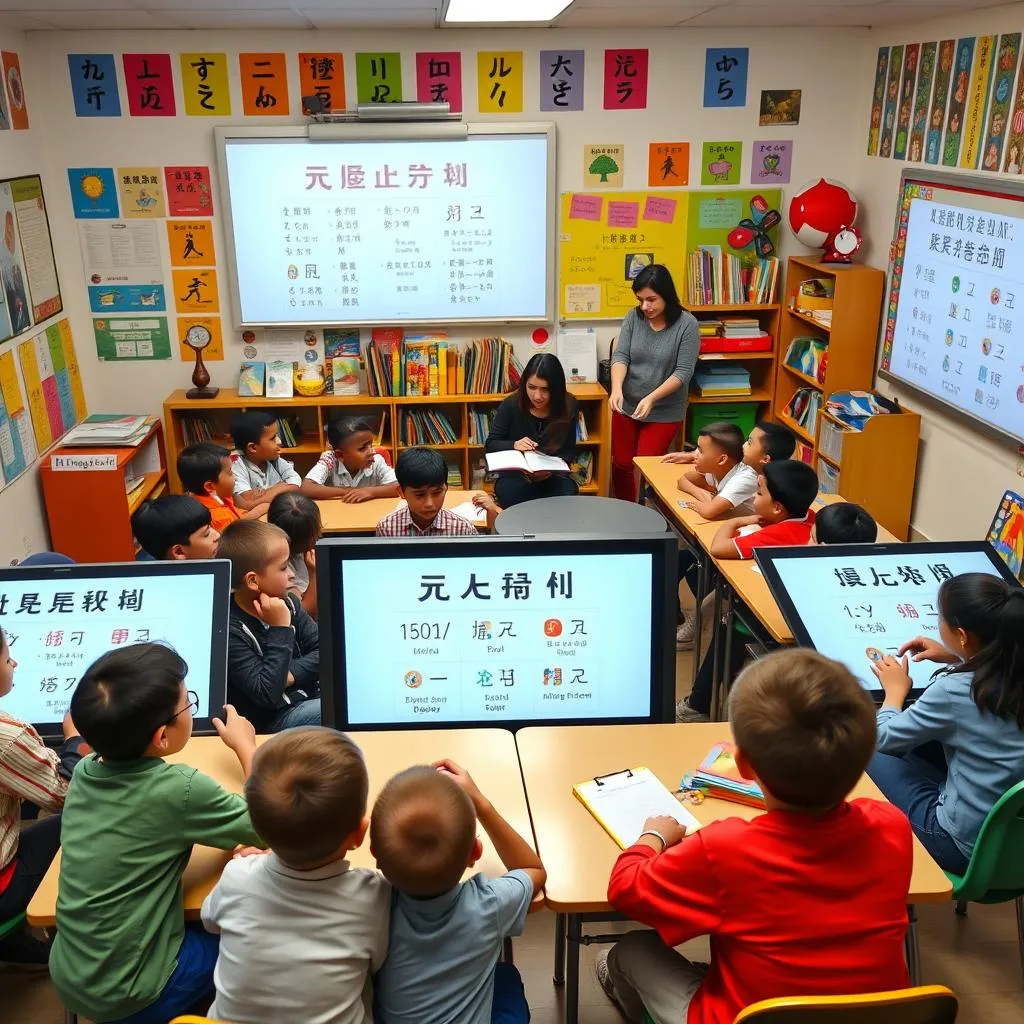The IELTS Reading test often includes passages on educational trends and innovative teaching methods. One such topic that has gained prominence in recent years is the rise of collaborative art projects in schools. Let’s explore this theme through a sample IELTS Reading test, complete with questions and answers.
Nội dung bài viết
- Passage 1 – Easy Text
- The Growing Importance of Collaborative Art in Education
- Questions 1-5
- Questions 6-10
- Passage 2 – Medium Text
- The Evolution of Collaborative Art in Educational Settings
- Questions 11-15
- Questions 16-20
- Passage 3 – Hard Text
- The Pedagogical Implications of Collaborative Art Projects in Educational Institutions
- Questions 21-26
- Questions 27-32
- Questions 33-40
- Answer Key
- Passage 1
- Passage 2
- Passage 3
Passage 1 – Easy Text
The Growing Importance of Collaborative Art in Education
In recent years, educators have increasingly recognized the value of collaborative art projects in schools. These initiatives not only foster creativity but also enhance students’ social skills and teamwork abilities. Collaborative art refers to artistic endeavors where multiple students work together to create a single piece or a series of interconnected works.
The benefits of such projects are manifold. Firstly, they encourage communication and cooperation among students, skills that are crucial in today’s interconnected world. Secondly, collaborative art projects often transcend traditional subject boundaries, integrating elements of art, science, and even mathematics. This interdisciplinary approach helps students see connections between different areas of study, promoting a more holistic understanding of the world around them.
Moreover, these projects often reflect real-world scenarios where teamwork and diverse skill sets are essential. By participating in collaborative art, students learn to appreciate different perspectives, negotiate ideas, and work towards a common goal. These experiences prepare them for future academic and professional challenges where collaboration is key.
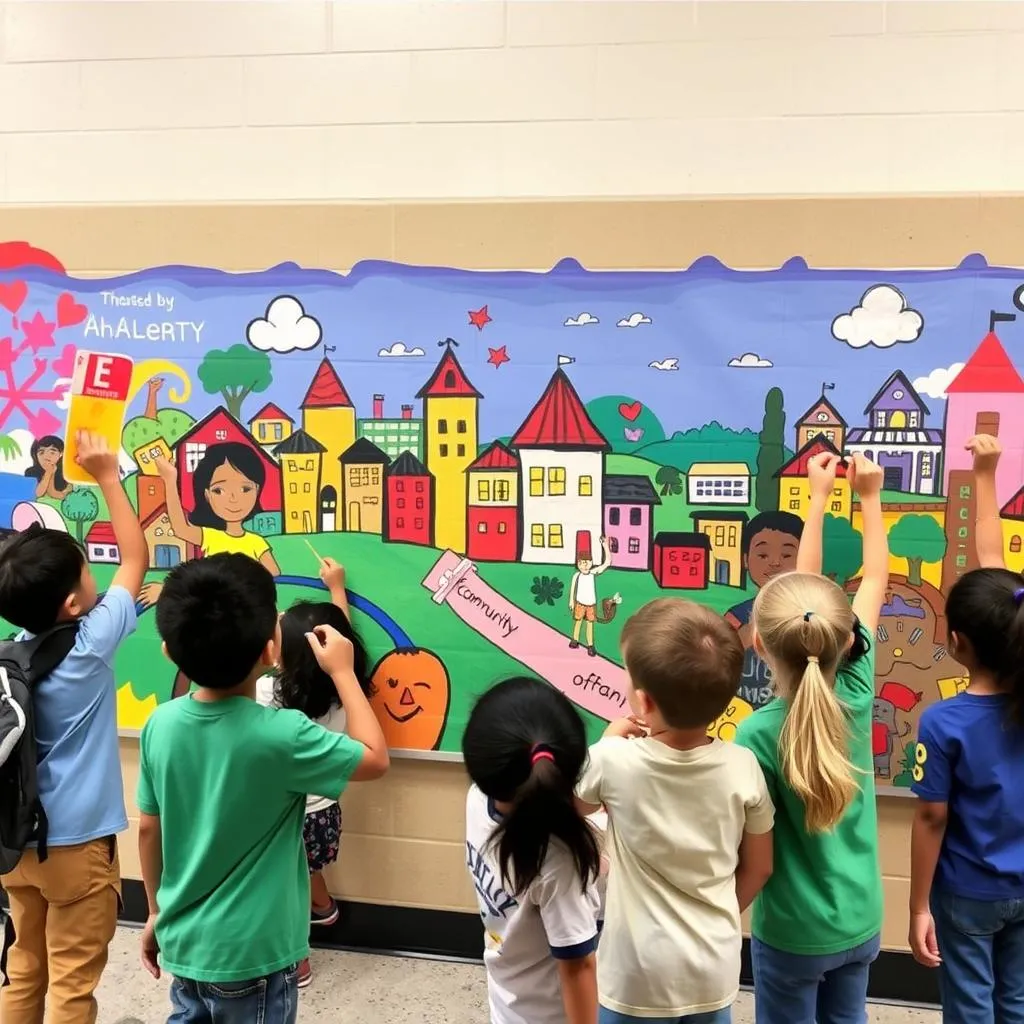 Students working together on a large mural
Students working together on a large mural
Schools implementing collaborative art projects have reported increased student engagement and improved school community cohesion. These projects often result in large-scale artworks that become points of pride for the entire school, fostering a sense of collective achievement and belonging.
Questions 1-5
Do the following statements agree with the information given in the reading passage?
Write:
TRUE if the statement agrees with the information
FALSE if the statement contradicts the information
NOT GIVEN if there is no information on this
- Collaborative art projects in schools are a relatively new educational trend.
- These projects only focus on developing artistic skills.
- Collaborative art can integrate different academic subjects.
- All students equally enjoy participating in collaborative art projects.
- Large-scale artworks resulting from these projects can boost school pride.
Questions 6-10
Complete the sentences below.
Choose NO MORE THAN TWO WORDS from the passage for each answer.
- Collaborative art projects help students develop important __ and __ abilities.
- These projects often go beyond __ subject boundaries.
- Collaborative art experiences prepare students for future __ and __ challenges.
- Schools have noticed increased student __ due to these projects.
- The artworks created become points of __ for the entire school community.
The impact of global media on children’s cultural awareness is another fascinating topic that often appears in IELTS Reading tests. It shares similarities with collaborative art projects in terms of broadening students’ perspectives and fostering cultural understanding.
Passage 2 – Medium Text
The Evolution of Collaborative Art in Educational Settings
The concept of collaborative art in schools has undergone a significant transformation over the past few decades. Initially viewed as mere group activities, these projects have evolved into sophisticated learning tools that address multiple educational objectives. This evolution reflects broader changes in pedagogical approaches, emphasizing experiential learning and 21st-century skills development.
Early iterations of collaborative art in schools were often limited to simple group paintings or murals. However, contemporary projects are far more diverse and complex. They may involve multimedia installations, interactive digital art, or even community-wide art initiatives. This expansion in scope has been largely facilitated by technological advancements, allowing for new forms of artistic expression and collaboration.
One notable trend is the integration of STEAM (Science, Technology, Engineering, Arts, and Mathematics) principles into collaborative art projects. For instance, students might create kinetic sculptures that require understanding of physics principles, or design digital art installations that involve coding. This interdisciplinary approach not only enhances learning outcomes but also prepares students for the increasingly interconnected nature of modern professions.
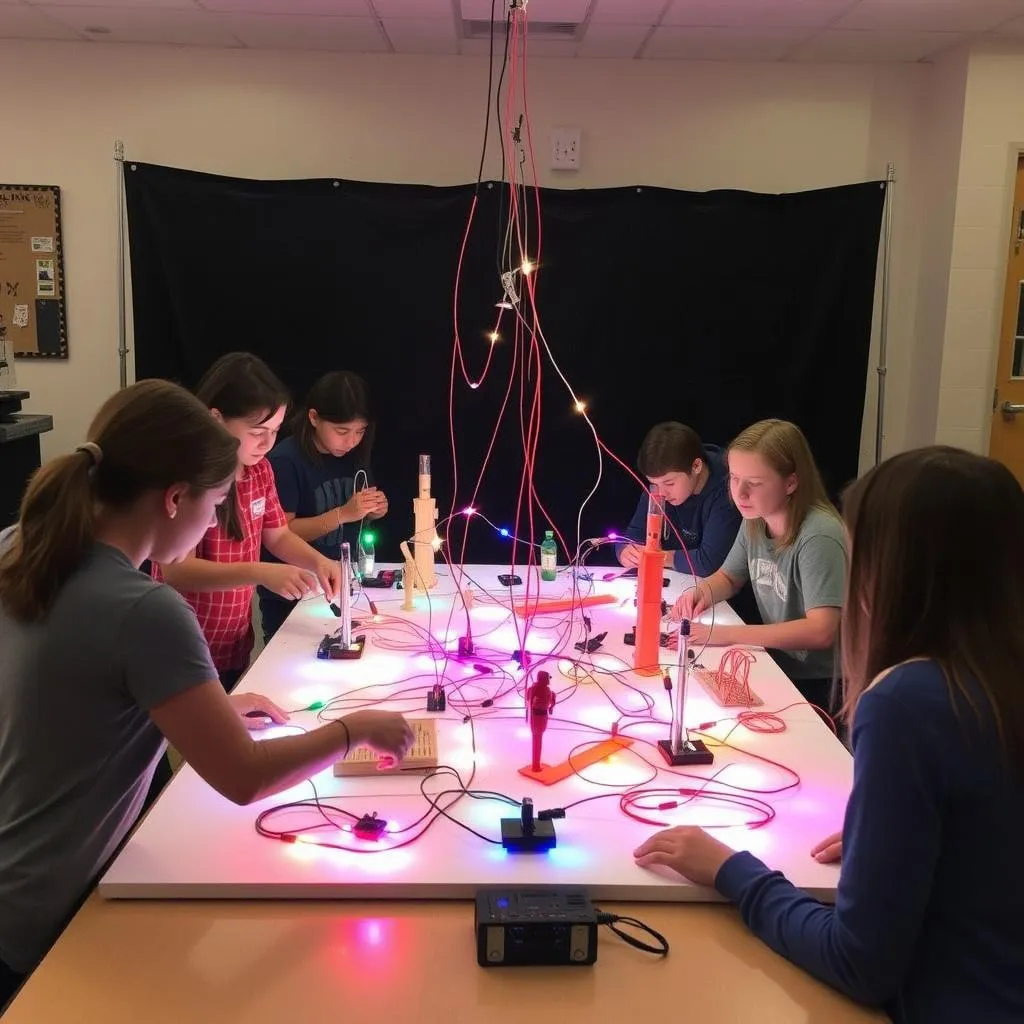 Students creating a STEAM-based art installation
Students creating a STEAM-based art installation
The rise of collaborative art projects has also led to changes in assessment methods. Traditional grading systems often struggle to capture the multifaceted nature of these projects. As a result, many educators have adopted portfolio-based assessments and peer evaluation techniques. These methods provide a more comprehensive view of student learning, encompassing not just the final product but also the process of collaboration and problem-solving.
Furthermore, collaborative art projects have proven to be powerful tools for promoting inclusivity and celebrating diversity within schools. By working together on art projects, students from different backgrounds learn to appreciate various perspectives and cultural expressions. This aspect of collaborative art aligns with broader educational goals of fostering empathy and global citizenship.
However, implementing effective collaborative art projects is not without challenges. It requires careful planning, adequate resources, and often, a shift in traditional teaching methodologies. Educators must balance providing guidance with allowing student autonomy, ensuring that the collaborative process is both structured and creative.
Questions 11-15
Choose the correct letter, A, B, C, or D.
-
The evolution of collaborative art projects in schools reflects:
A) A decrease in the importance of art education
B) Changes in pedagogical approaches
C) A focus on individual artistic expression
D) A return to traditional teaching methods -
Modern collaborative art projects in schools often involve:
A) Only painting and drawing
B) Exclusively digital mediums
C) A variety of mediums including digital and interactive art
D) Solely traditional art forms -
The integration of STEAM principles in collaborative art projects:
A) Limits artistic expression
B) Focuses only on science and math
C) Enhances interdisciplinary learning
D) Decreases student engagement -
Assessment of collaborative art projects has shifted towards:
A) Stricter grading criteria
B) Focusing only on the final product
C) More comprehensive methods like portfolio-based assessments
D) Eliminating all forms of evaluation -
One of the challenges in implementing collaborative art projects is:
A) Decreasing student interest in art
B) Balancing guidance and student autonomy
C) Removing all structure from the process
D) Focusing solely on individual work
Questions 16-20
Complete the summary below.
Choose NO MORE THAN TWO WORDS from the passage for each answer.
Collaborative art projects in schools have evolved significantly, moving beyond simple group activities to become sophisticated (16) __ tools. These projects now often incorporate (17) __ installations and community-wide initiatives. The integration of STEAM principles allows students to apply knowledge from various disciplines, preparing them for (18) __ professions. Assessment methods have also changed, with many educators adopting (19) __ assessments to provide a more comprehensive view of student learning. These projects are particularly effective in (20) __ and celebrating diversity within school communities.
Passage 3 – Hard Text
The Pedagogical Implications of Collaborative Art Projects in Educational Institutions
The proliferation of collaborative art projects in educational settings has precipitated a paradigm shift in pedagogical methodologies, engendering a reevaluation of traditional educational paradigms. This phenomenon, while ostensibly centered on artistic expression, has far-reaching implications for cognitive development, social-emotional learning, and the cultivation of essential 21st-century competencies.
At its core, the collaborative art movement in schools represents a microcosm of the broader societal trend towards interconnectedness and collective problem-solving. By engaging in these projects, students are not merely creating art; they are participating in a complex ecosystem of idea exchange, negotiation, and synthesis. This process mirrors the dynamics of contemporary professional environments, where cross-functional collaboration and interdisciplinary approaches are increasingly valorized.
The cognitive benefits of collaborative art projects are multifaceted and profound. These initiatives necessitate the simultaneous engagement of multiple cognitive processes, including divergent thinking, spatial reasoning, and metacognition. As students navigate the complexities of group dynamics and artistic decision-making, they are compelled to engage in higher-order thinking skills, such as analysis, evaluation, and creation, as delineated in Bloom’s Taxonomy.
Moreover, collaborative art projects serve as a vehicle for developing emotional intelligence and social cognition. The inherently interactive nature of these endeavors fosters empathy, perspective-taking, and conflict resolution skills. Students learn to calibrate their own creative impulses with those of their peers, a process that engenders both self-awareness and social adaptability.
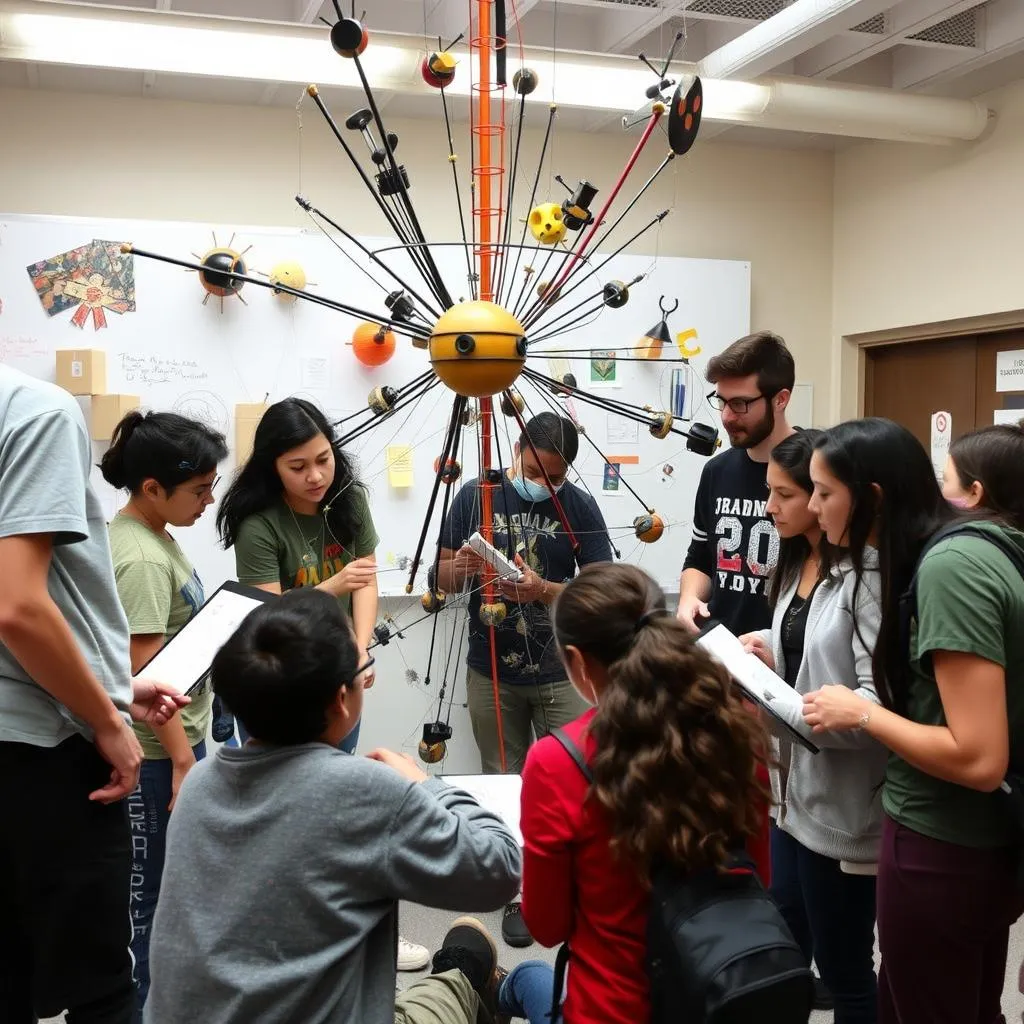 Students engaged in complex problem-solving during art project
Students engaged in complex problem-solving during art project
From a neurological perspective, collaborative art engagement activates multiple brain regions simultaneously. The visual-spatial processing involved in art creation stimulates the occipital and parietal lobes, while the collaborative aspect engages the prefrontal cortex, responsible for executive functions such as planning and decision-making. This neural cross-talk potentially facilitates the formation of new synaptic connections, enhancing cognitive flexibility and adaptive thinking.
The pedagogical value of collaborative art extends beyond individual cognitive development to the realm of collective knowledge construction. These projects epitomize the principles of social constructivism, as propounded by Lev Vygotsky, wherein learning is viewed as an inherently social process. Through collaborative art, students co-create not only tangible artistic outputs but also shared understanding and collective meaning.
However, the implementation of collaborative art projects is not without its challenges. It necessitates a recalibration of traditional assessment metrics, as conventional grading systems often fail to capture the nuanced learning outcomes of these endeavors. Educators must develop rubrics that evaluate not only the artistic merit of the final product but also the quality of collaboration, problem-solving processes, and individual growth trajectories.
Furthermore, the successful execution of collaborative art projects requires a delicate balance between structure and autonomy. Educators must provide sufficient scaffolding to guide the collaborative process while simultaneously allowing space for organic student-led exploration and discovery. This pedagogical tightrope walk demands a high degree of teacher adaptability and a willingness to embrace emergent learning outcomes.
In conclusion, the rise of collaborative art projects in schools represents a significant evolution in educational praxis. These initiatives serve as powerful catalysts for developing a wide array of cognitive, social, and emotional competencies essential for success in an increasingly complex and interconnected world. As educational institutions continue to grapple with the imperative of preparing students for an uncertain future, collaborative art projects emerge as a promising avenue for fostering the adaptability, creativity, and collaborative prowess that will be crucial in navigating the challenges of the 21st century and beyond.
Questions 21-26
Complete the summary below.
Choose NO MORE THAN THREE WORDS from the passage for each answer.
Collaborative art projects in schools represent a shift in educational methods, reflecting a broader trend towards (21) __ and collective problem-solving. These projects engage multiple cognitive processes, including (22) __, spatial reasoning, and metacognition. They also develop (23) __ and social cognition, fostering skills like empathy and conflict resolution. Neurologically, collaborative art activates various brain regions, potentially forming new (24) __. These projects exemplify (25) __, where learning is seen as a social process. However, implementing such projects requires developing new (26) __ that can assess various aspects of the collaborative process and individual growth.
Questions 27-32
Do the following statements agree with the claims of the writer in the reading passage?
Write:
YES if the statement agrees with the claims of the writer
NO if the statement contradicts the claims of the writer
NOT GIVEN if it is impossible to say what the writer thinks about this
- Collaborative art projects in schools only benefit students’ artistic skills.
- These projects mirror the dynamics of modern professional environments.
- Engaging in collaborative art activates multiple regions of the brain simultaneously.
- Traditional grading systems are adequate for assessing collaborative art projects.
- Educators need to maintain a balance between providing structure and allowing student autonomy in these projects.
- Collaborative art projects are the only effective way to prepare students for future challenges.
Questions 33-40
Complete the sentences below.
Choose NO MORE THAN TWO WORDS from the passage for each answer.
- Collaborative art projects in schools represent a __ in pedagogical methodologies.
- These projects engage students in a complex ecosystem of idea exchange, negotiation, and __.
- The cognitive benefits of collaborative art projects include the development of __ thinking.
- Collaborative art serves as a vehicle for developing __ intelligence.
- From a neurological perspective, the collaborative aspect of these projects engages the __, responsible for executive functions.
- These projects epitomize the principles of __, as proposed by Lev Vygotsky.
- Implementing collaborative art projects requires a recalibration of traditional __ metrics.
- Collaborative art projects are seen as catalysts for developing competencies essential for success in an increasingly __ world.
Importance of public libraries in education is another topic that often appears in IELTS Reading tests. Like collaborative art projects, public libraries play a crucial role in fostering community engagement and providing resources for diverse learning experiences.
Answer Key
Passage 1
- TRUE
- FALSE
- TRUE
- NOT GIVEN
- TRUE
- social, teamwork
- traditional
- academic, professional
- engagement
- pride
Passage 2
- B
- C
- C
- C
- B
- learning
- multimedia
- interconnected
- portfolio-based
- promoting inclusivity
Passage 3
- interconnectedness
- divergent thinking
- emotional intelligence
- synaptic connections
- social constructivism
- rubrics
- NO
- YES
- YES
- NO
- YES
- NOT GIVEN
- paradigm shift
- synthesis
- divergent
- emotional
- prefrontal cortex
- social constructivism
- assessment
- complex
This comprehensive IELTS Reading practice test on “The Rise of Collaborative Art Projects in Schools” covers various aspects of the topic, from basic understanding to complex analysis. It demonstrates how collaborative art initiatives are reshaping education, fostering creativity, and preparing students for future challenges.
How to raise a bright child is another fascinating topic that often appears in IELTS Reading tests. Like collaborative art projects, it focuses on innovative approaches to child development and education.
Remember, success in IELTS Reading requires not only understanding the content but also mastering various question types and time management skills. Practice regularly with diverse topics and question formats to improve your performance.
